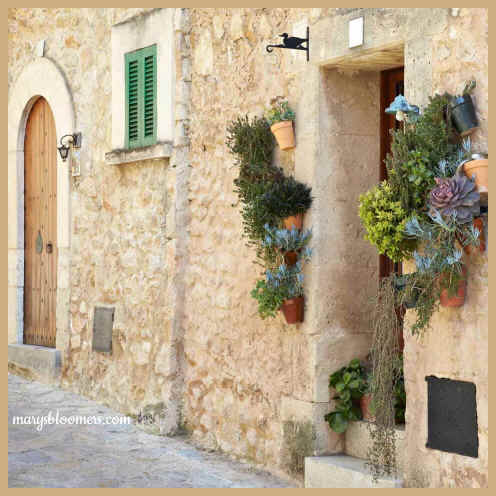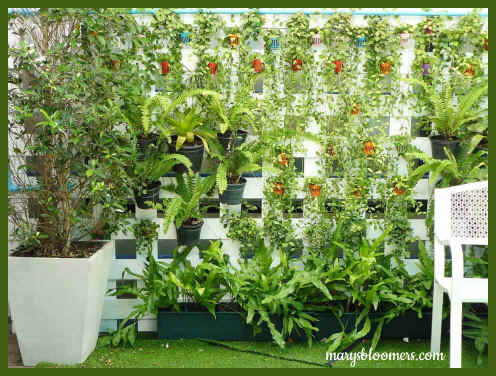|
|
Vertical gardens can also
be successfully grown indoors, utilizing grow bulbs. Vertical gardening seems pretty simple if you equate it with square foot gardening. But you're growing that square foot garden vertically. The amount of horizontal space you save, and how many plants you can grow, is the bonus. More plants, in less space. And a great use of the sometimes "dead space" between your floor and ceiling, or the blank space between the ground and the tops of your fences. Multiple-pot macrame plant hangers hung from ceilings and porch eaves can give you a 3-tiered garden, using that traditional dead space for food or flowers. Grow 40+ plants
vertically, instead of 10 on the ground in pots? Oh, yes, indeed. Grow large, vining plants
and vegetables that you couldn't grow before in your garden because of
lack of space. I also make use of tall, iron trellises that can grow and hold anything vertically. At the moment, at least 12- 72 inch tall trellises bear potted clematis and honeysuckle. At the bases of these trellises, the tops of the pots around the plants are filled with succulent groundcovers or creeping herbs, like thyme. the trellises are less than 2 ft. wide, taking up very little space for the intensive plantings. These trellises will also be used to hold up vining veggies, like peas, beans, eggplant and cucumbers, when needed. Think of how much space your traditional garden needs to grow these large, rambling plants. Then think of growing them in less than 2 ft. of horizontal space. Using trellises in pots also allows you to grow some aggressive flowering vines and plants that you wouldn't dare put in the ground, should they become invasive. Weaving vines within the trellis also gives you the opportunity to grow a large, and very neat and compact plant.
Vertical Farming
|
||||||||||
|
Texas A&M- Vertical Farming Technique - Tower Gardening
AMU Urban Farm United is a concept organization with the intent of introducing vertical farming to A&Mís campus and the local community. Vertical Tower Gardening uses 90 percent less water, because thereís no evaporation. The only loss of water is through root absorption. It uses 90 percent less land because, per tower, you can grow forty-four heads of lettuce in about four square feet of space. And they donít get earth-borne pests. The towers used for the vertical farming are based on an aeroponic system, an environment of air rather than soil for the plants. The tower system feeds the plants through mimic rain (shower of mineral water trickles down), and since each tower is isolated, contamination does not spread among them. The
aeroponic system means that the roots are in a cylindrical
tower base, where the roots are exposed to air. The shape of the tower not only conserves space, but is able to cycle the water as needed. The system also brings a 30 percent higher yield, when compared to traditional alternatives. |
||||||||||
|
Decorative
Vertical Gardening |
 |
|
|
|
|
|
|
 |
 |
|
| Sources: Country Living Magazine IGrow Texas A&M University |
|
Content, graphics,
photos and design ©2020 marysbloomers.com
This
site uses Watermarkly Software
|














